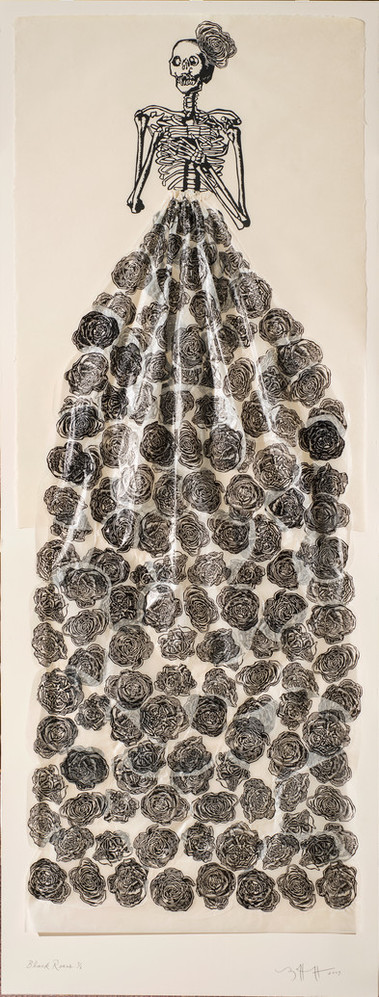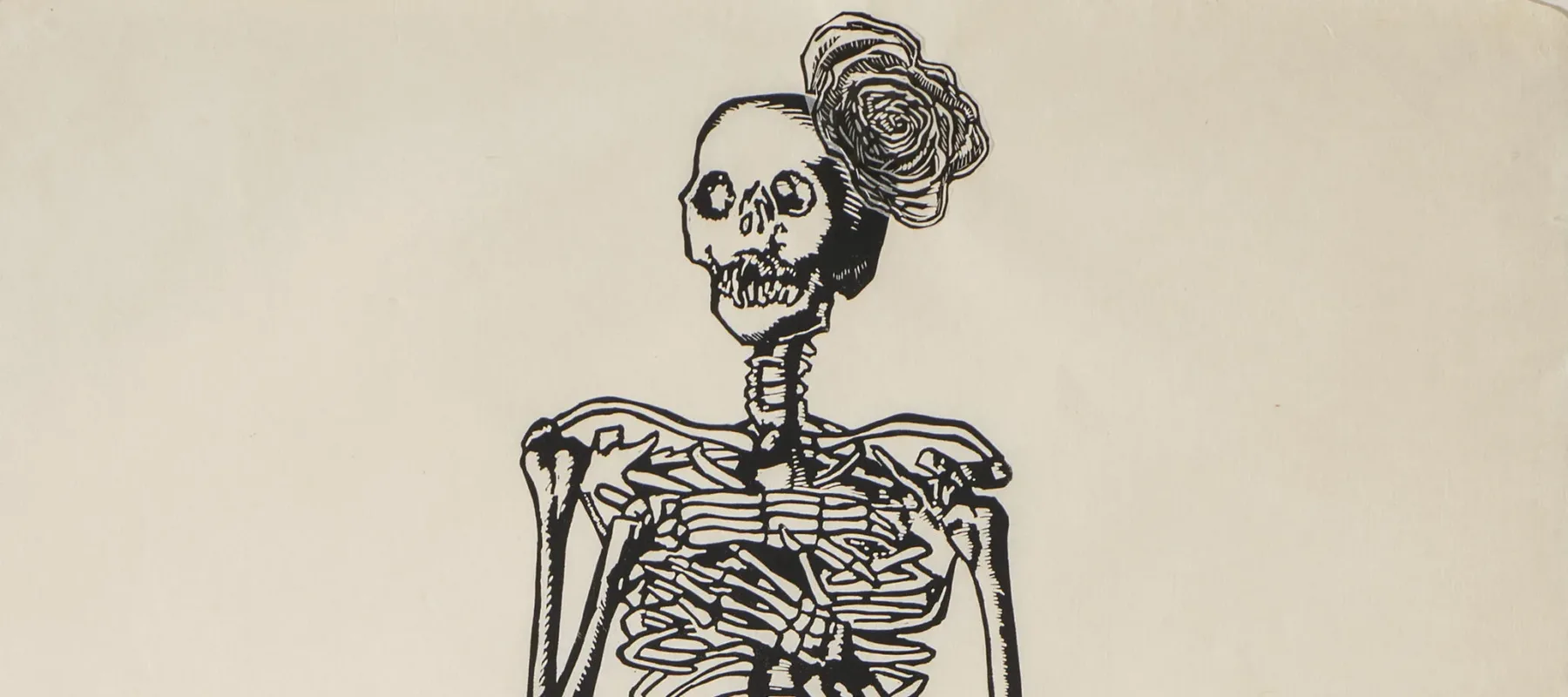Audrey Niffenegger’s works explore the world of the unconscious mind through dreams and fantasies—within NMWA’s exhibition Awake in the Dream World, many of these pieces are gathered in a gallery called “In Dreamland.” The “Dreamland” works tell unusual and interesting stories where morbidity, romance, and humor intermix. Niffenegger confronts themes of mortality and the passage of time in an attempt to startle her viewers into appreciating “the fleeting nature of our selves.” Skeletons feature prominently in these macabre images: Niffenegger describes the cadaverous figures as a part of a “vocabulary for expressing ideas about permanence and the ephemeral.”

In paying tribute to the late British fashion editor Isabella Blow in 2007, Niffenegger created a portrait of Blow as an elaborately adorned skeleton, strangely luminous and delicate in a gorgeous array of black roses. To create the flowers, the artist used silky Japanese tissue, which enlivens the skirt’s rich, textural billow and folds, counterbalancing the skeleton’s austere torso. Another work on view dedicated to the memory of the fashionista, The Starling’s Funeral, depicts her in a similarly radiant manner as the lustrous bird known for its iridescent plumage.
For Blow’s funeral, her dear friend, the hat designer Philip Treacy, arranged for her body to be carried to Gloucester Cathedral by a horse-drawn Victorian carriage made of glass. Emulating the romantic flourish of Blow’s service, Niffenegger preserved the editor’s trademark love of fashion, as she remains impeccably dressed even in the afterlife. The artist added a final decorative touch to the composition with a rose atop Blow’s head in an allusion to Treacy, another Niffenegger fashion idol. The figure in Black Roses (In Memory of Isabella Blow), with its strange, otherworldly beauty, epitomizes Niffenegger’s artistic style.
Niffenegger often portrays troubled women, both real and imagined. Like many of the artist’s tragic characters, Blow suffered from mental and physical anguish leading up to her death. Slightly morbid and somehow whimsical at the same time, the works featured in “In Dreamland” push the impending nature of death to the forefront of viewer’s minds with memento mori like skeletons and her Vanitas portfolio. In spite of this heaviness, Niffenegger imbues works like Black Roses with buoyancy that suggests a sense of hope—or at least a sense of the absurd—in the face of life’s despair.
